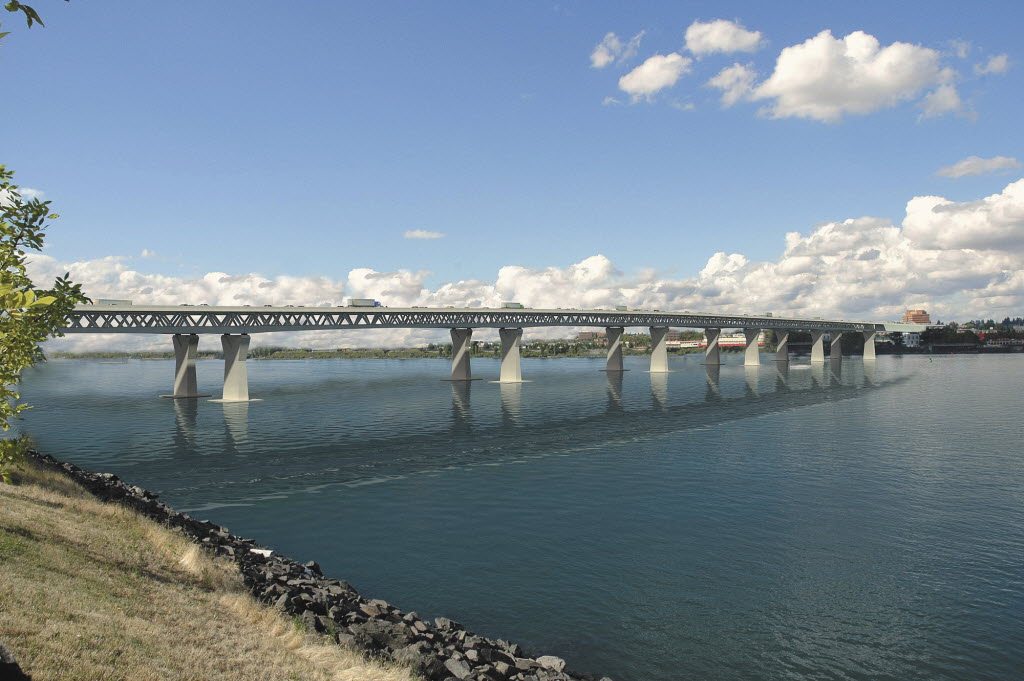After balking over concerns about the Columbia River Crossing’s impact to Hayden Island last month, Oregon’s Metro government agreed Thursday to sign off on the project.
The agency is the last of the six local entities that must approve the CRC’s Final Environmental Impact Statement; the move means the document will now go to the federal government for approval.
If it passes federal muster — which planners hope will happen by December — the CRC then can begin seeking funding for its $3.1 billion to $3.5 billion bridge, highway and light rail project on Interstate 5.
In a work session this week and in a meeting last month, the seven elected members of the Metro council raised mitigation issues for Hayden Island, including access to groceries, air pollution and living conditions during construction. Project critics had been hoping Metro’s concerns would cause them to block the FEIS from going forward.
But Metro President Tom Hughes said the CRC had addressed enough of their worries that they were comfortable giving it the go-ahead.
“I think that we’re ready to go,” Hughes said. “This project has to happen … our port and the port in Vancouver are in the process of being strangled by the congestion that takes place on I-5.”
As they gave unanimous approval of the FEIS, several councilors stressed the need to link Vancouver and Portland, via both freeway and light rail.
As the metro area’s first light rail line nears it’s 25th anniversary, Councilor Barbara Roberts said that history will look favorably upon the extension of the Yellow Line to Vancouver.
“I’m going to see that light rail go over into Vancouver and Clark County,” she said. “This tri-county area —- and Clark County — is a region. Even though the river separates us, it does not divide us.”
Hughes also summed up the political tightrope that separates Oregon and Southwest Washington on the project.
While many Portlanders would have been happy to just extend light rail to downtown Vancouver without a highway expansion, Vancouver leaders made it clear that was not going to happen.
“What the Vancouver folks have said to me clearly … is no bridge, no light rail,” Hughes said. “What we’ve said to them is no light rail, no bridge. So we have both. That’s the only way we can move forward on this.”
However, numerous speakers questioned the Metro council’s decision to give approval to the FEIS, which addresses environmental impacts, before its clear about how construction of the five miles of highway interchange improvements will be phased.
Others called into question faulty traffic models that overestimated the volume of traffic on the span and the tenuous financial situations at the federal and state levels.
Councilor Carlotta Collette shared many of the skeptic’s concerns.
“I’m looking forward to a bridge that we as a region can celebrate,” Collette said. “I don’t think we’re there yet.”
She pointed out Clark County is yet to vote on light rail funding and tolling hasn’t been approved by the Washington legislature. She called speakers’ concerns legitimate and said the CRC is a “pretty scary project” that could “die at any step along the way” in this budget climate.
But, she said, not signing the FEIS does nothing to alleviate all of the potential roadblocks.
“We don’t resolve it by saying no today; we resolve it by taking the next steps,” Collette said.
The council made it clear that it also plans to track developments on Hayden Island.
Among the concessions that the CRC made to Metro over Hayden Island include promising to fight for a Community Enhancement Fund and using best available technology to stymie air pollution.
The CRC will also urge the Hayden Island Safeway, which will be torn down for construction, to relocate elsewhere on the island, but cannot force it to do so. However, the island’s Target plans to expand to include a grocery store.
One Hayden Island resident said that while he was in strong favor of a new bridge, he said the CRC needs to take more responsibility to make sure fresh vegetables are still available close to his home.
He called the produce sections of SuperTargets “laughable.”
“They have a few carrots and a few potatoes,” Tom Dana said. “We need a Safeway or another grocery store.”
Metro, the Southwest Washington Regional Transportation Commission, Tri-Met, C-Tran and the Washington and Oregon departments of transportation are all signatory agencies on the FEIS.
CRC Deputy Director Kris Strickler said the project should have the massive document available online for the public on Sept. 23 and also available at places such as local libraries. The public will have 30 days to make comments that will also be sent to the federal government. The CRC said Thursday it hopes to break ground in late 2013.



